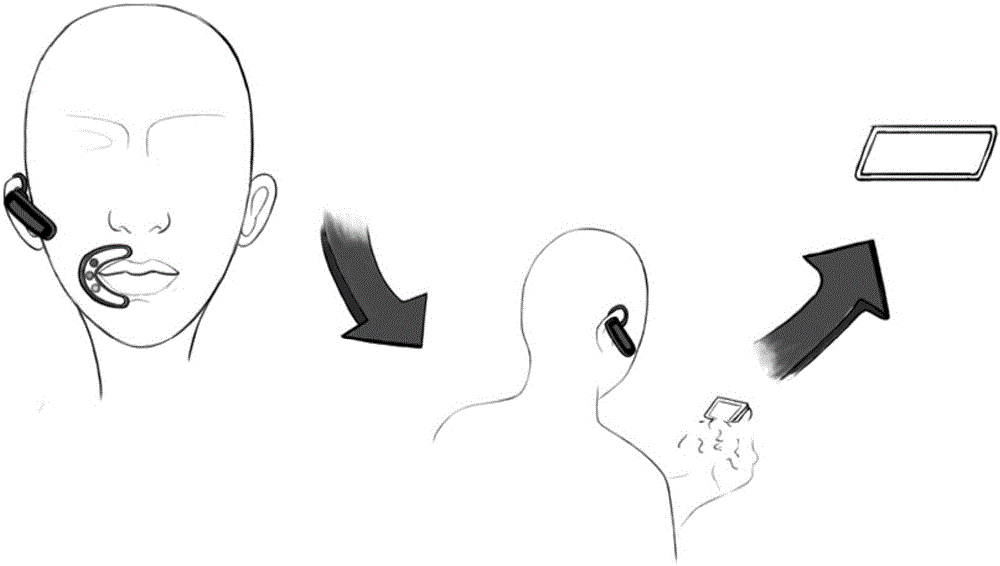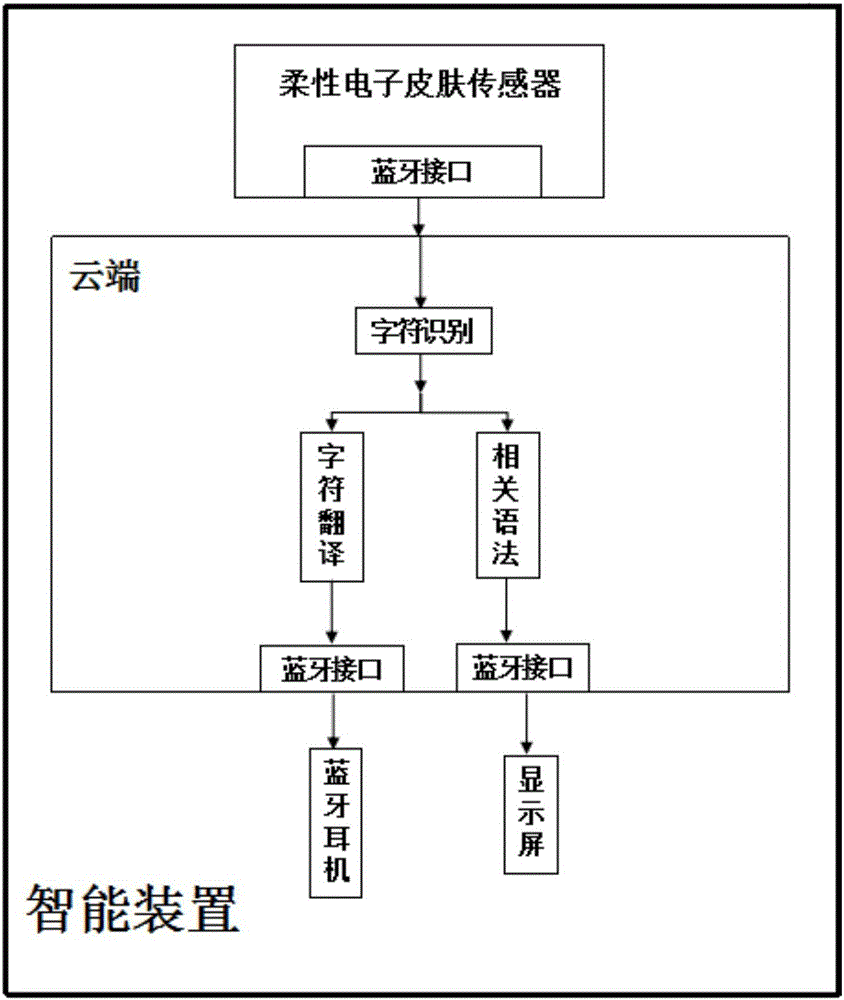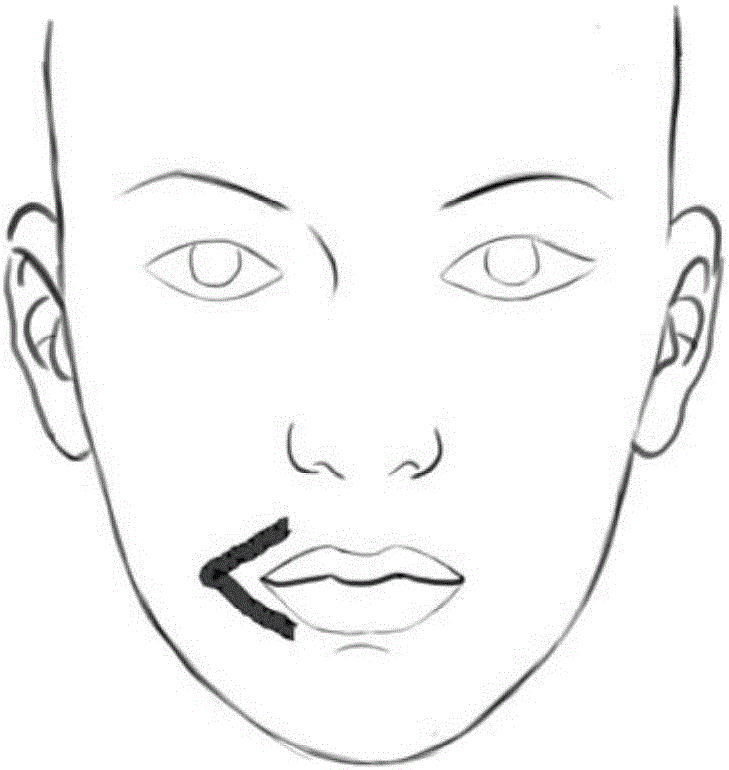Flexible electronic skin based interactive intelligent translation system and method
An electronic skin and translation system technology, applied in natural language translation, mechanical mode conversion, electrical digital data processing, etc., can solve the problems of complex operation, poor portability, and poor real-time performance, and achieve simple equipment, convenient portability, and low cost. Effect
- Summary
- Abstract
- Description
- Claims
- Application Information
AI Technical Summary
Problems solved by technology
Method used
Image
Examples
Embodiment 1
[0055] An interactive intelligent translation device based on flexible electronic skin, the schematic diagram of the appearance is as follows figure 1 As shown, the connection structure diagram is as follows figure 2 As shown, the device includes: a lip language signal collection unit, a character recognition unit, a translation unit, a broadcast unit, a display unit, and a feedback reminder unit. It mainly includes: a flexible skin sensor attached around the user's mouth, a small display screen and a Bluetooth headset, and 3 LED prompt lights in green, red and yellow for feedback to the user. The smart device also includes a bluetooth interface circuit, a wireless communication interface connected with external terminals such as mobile phones and computers, and a lithium battery for powering each part.
[0056] Such as image 3 As shown, the flexible electronic skin sensor is pasted around the mouth, and the flexible skin sensor is made of graphene, a new material with ver...
Embodiment 2
[0060] Such as Figure 6 , 7 As shown, the system realizes one-to-one recognition and continuous recognition of several letters together. In character recognition, this system can realize the recognition of 26 letters of simple English through the algorithm of artificial neural network, and the recognition rate is very high. Moreover, this system can realize simultaneous recognition of 4 or 5 letters at a time, and ensure that the order of letters remains unchanged, that is, the type and order of letters in the output recognition result are completely consistent with the input. For example, use a flexible skin sensor to measure the lip vibration signal when reading 5 letters "hello", and input this signal waveform into the recognition system already established in MATLAB, and the system will use the artificial neural network recognition algorithm to convert each The letters are compared and recognized with the established 26-letter database, and finally the recognition resul...
Embodiment 3
[0062] Such as Figure 8 As shown, the system realizes superposition recognition of letters. In MATALB, a database of lip vibration electrical signals of the English letters "K" and "U" was established, and then the lip vibration electrical signals when reading the English letter "Q" were measured, and input into the recognition system of MATLAB, the system will The pronunciation [kju:] of the letter "Q" is respectively recognized by the recognition algorithm of the neural network as the phonetic symbol [kei] of the letter "K" and the phonetic symbol [ju:] of the letter "U". The lip language vibration electrical signal of the letter "Q" is obtained by the word formation method, and finally the recognition result is the letter "Q" will be output on the control panel of MATLAB. The lip language recognition system we have established can not only realize one-to-one recognition, It can also realize the powerful function of overlay recognition. That is, since syllables are the ba...
PUM
 Login to View More
Login to View More Abstract
Description
Claims
Application Information
 Login to View More
Login to View More - R&D
- Intellectual Property
- Life Sciences
- Materials
- Tech Scout
- Unparalleled Data Quality
- Higher Quality Content
- 60% Fewer Hallucinations
Browse by: Latest US Patents, China's latest patents, Technical Efficacy Thesaurus, Application Domain, Technology Topic, Popular Technical Reports.
© 2025 PatSnap. All rights reserved.Legal|Privacy policy|Modern Slavery Act Transparency Statement|Sitemap|About US| Contact US: help@patsnap.com



